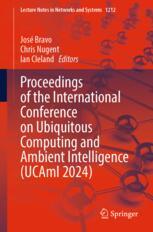We assessed the effectiveness of our method through two evaluation techniques: 10-fold cross-validation and a leave-one-subject-out approach. The outcomes of our experiments demonstrated notable performance gains across both validation strategies.
Unlocking the Potential of Smart Toothbrushes in Ambient Intelligence
Filtering Data from Motion Sensors with Rich Features for Monitoring Brushing Behaviors
Published in Healthcare & Nursing, Computational Sciences, and General & Internal Medicine

When we think about the future of ambient intelligence and smart environments, our minds often leap to familiar icons of innovation—smart thermostats, connected lighting systems, intelligent voice assistants, and adaptive security cameras. However, one everyday object is frequently overlooked, despite its rich potential for integration into intelligent environments: the humble toothbrush. Specifically, smart toothbrushes equipped with sensors and communication modules have the capability to become far more than personal hygiene devices. These tools can play a meaningful role in health monitoring, behavioral analysis, and even in educational gamification, particularly when paired with the broader concept of ambient intelligence.
Smart toothbrushes can be fitted with inertial measurement units (IMUs)—sensors that track motion and orientation—and connected via Bluetooth Low Energy (BLE) to support wireless communication. These embedded technologies enable the toothbrush to gather detailed, real-time data on brushing activity and transmit it to nearby devices or networks, allowing us to monitor brushing habits or motivate children to maintain dental hygiene through gamified apps.
In fact, in the context of ambient assisted living and smart home systems, these toothbrushes can become subtle but powerful extensions of a broader health-monitoring infrastructure. For example, in homes designed for elderly residents, a smart toothbrush can offer insights into changes in daily routines, motor function, and general health status—potentially signaling early signs of cognitive or physical decline if brushing patterns become erratic. This adds a new layer of non-intrusive monitoring to smart homes, complementing more explicit health sensors like wearable devices or environmental monitors.
Building upon this concept and exploring its practical feasibility, our research work delves into the analysis of public data collected from smart toothbrushes used by a group of participants over a period of one week. Specifically, the used dataset includes brushing activity from 17 participants, each of whom brushed their teeth in five different locations, resulting in a rich, context-aware dataset. This structure allowed us to assess both individual variability and environmental impact on brushing behavior, creating opportunities for more nuanced interpretations and modeling approaches.
The core aim of our study was to investigate how advanced filtering techniques could improve the overall data quality and subsequently enhance the performance of models built on this data. While the original dataset provided an intriguing starting point, like many real-world datasets collected from sensors in unconstrained environments, it was affected by various sources of noise, inconsistencies, and artifacts that made immediate analysis less reliable.
To address this, we designed and applied eight distinct filtering techniques on top of the original preprocessing pipeline. Each technique was chosen to target a specific category of signal distortion or anomaly and included both classical signal processing methods and more modern statistical techniques. Examples of the methods applied include Bessel low-pass , band-pass, Chebyshev , and Savitzky-Golay filtering.
Our preliminary findings support this hypothesis strongly. After applying the enhanced filtering procedures, we observed significant improvements in the signal clarity, event detection accuracy, and overall consistency of the data across multiple dimensions. In particular, performance metrics related to brush orientation tracking, motion consistency, and session segmentation showed notable enhancements.
From an ambient intelligence standpoint, these improvements are especially promising. In a smart home scenario, devices are expected to collaborate silently and continuously in the background, creating an environment that is both responsive and context-aware without demanding active engagement from the user. For such systems to function reliably, the data they rely on must be dependable, interpretable, and as noise-free as possible. By enhancing the quality of raw brushing data through intelligent filtering, we are laying a foundation for the toothbrush to become an active node in a smart, interconnected ecosystem.
In conclusion, this work-in-progress highlights an exciting and largely underexplored avenue for integrating everyday objects into the ambient intelligence landscape. Smart toothbrushes, when enhanced with robust data filtering techniques and context-aware analytics, can transcend their role as simple hygiene tools to become meaningful participants in health and behavioral monitoring networks. By investing in the careful conditioning of their data and building thoughtful, human-centric applications on top, we can unlock a whole new dimension of intelligence from the most unassuming corners of our daily lives.
Follow the Topic
Public Health
Life Sciences > Health Sciences > Public Health
Health Care
Life Sciences > Health Sciences > Health Care
Artificial Intelligence
Mathematics and Computing > Computer Science > Artificial Intelligence
Dentistry
Life Sciences > Health Sciences > Clinical Medicine > Dentistry
Computer and Information Systems Applications
Mathematics and Computing > Computer Science > Computer and Information Systems Applications
Your space to connect: The Forensic dentistry Hub
A new Communities’ space to connect, collaborate, and explore research on Dentistry and Forensic Medicine!
Continue reading announcement




Please sign in or register for FREE
If you are a registered user on Research Communities by Springer Nature, please sign in